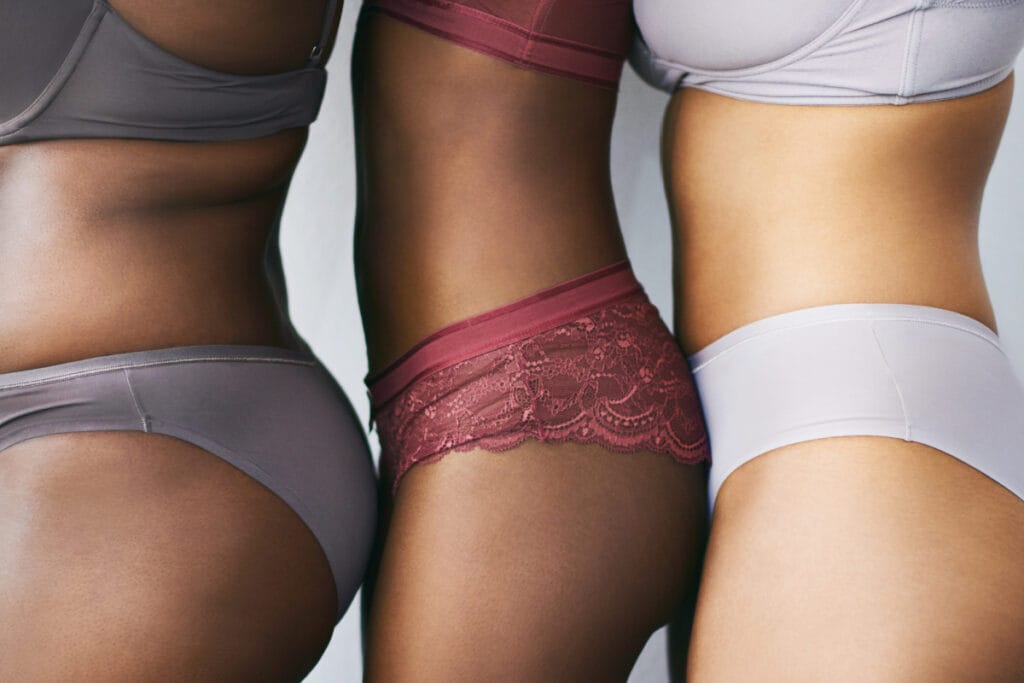Dr. Sobel Debunks the Biggest Myth About Fat Grafting Procedures

Historically, fat grafting procedures have had a terrible reputation for stability—mostly due to limited long-term follow-up data and misunderstandings of the body’s response after the procedure. Here, triple board-certified Bellevue cosmetic surgeon and fat transfer specialist Dr. Alex Sobel clarifies the realities of fat grafting and debunks the most common myth surrounding this transformative treatment.
What is fat grafting?
During a fat grafting or fat transfer procedure, Dr. Sobel harvests unwanted fat from one part of the body with liposuction and carefully purifies it before injecting it into another area, typically the breasts, buttocks (Brazillian Butt Lift), or the face to enhance volume and improve contours. Fat transfer procedures are ideal for achieving a natural look and feel with the added advantage of sculpting the donor site for a more aesthetically-pleasing appearance.
The myth: Fat grafting results don’t last
The misconceptions about fat graft survival largely stem from final results being declared prematurely and “after” photos being taken too soon to accurately represent the final outcome. This leads to patients believing that their initial results have diminished and those considering a fat graft procedure are not viewing realistic results.
What actually happens to transferred fat?
The contemporary model of fat grafting we believed 15 years ago suggested that most of the transferred fat cells die, and only a small percentage survive, a concept known as “take rates.” However, more recent science reveals a much more nuanced process: The majority of the grafted fat may initially die, but the remaining cells—specifically those destined to become fat cells—thrive in their new environment. These cells differentiate into mature fat cells, absorb lipids, and integrate seamlessly into the surrounding tissue for long-term stability
Newly transferred fat is just as resistant to diet and exercise as it was before it was harvested, so patients can move stubborn fat to places where they want resilient tissue.
One of the most biologically unique aspects of transferred fat cells is that they behave in the same way after leaving the donor site. For example, if you have stubborn lower abdominal fat and use it to fill out the upper portion of your breast, the newly transferred fat in your breast upper pole is just as resistant to diet and exercise as it was when it was in your abdomen.
The truth about fat grafting results
Patients who are not fully informed on the full physiological process that occurs after a fat transfer are doomed to initial disappointment. The process of fat graft integration takes about four months. This time frame is also when most of the post-surgery swelling resolves. The reduction in volume caused by normal fat graft die-off combined with diminished swelling understandably gives the appearance that the fat graft did not take and that the procedure was not successful.
However, by the end of the year, the fat graft stabilizes and the true final outcome looks beautifully natural and the enhancement is long-lasting. The one-year mark is when Dr. Sobel takes final post-op photos of his patients who underwent a fat transfer in Bellevue.
“He was very caring and always available to attend to any of my concerns or needs after procedure as well. Loved the outcome of my first surgery and went back and had additional procedures done with him as he totally earned my trust and loved loved the outcome of everything that he has done for me cosmetically so far. Would recommend him and would go back.”
Volume gain after a fat grafting procedure
Fat grafting achieves a subtle, but noticeable volume increase. It is difficult to quantify an exact amount—there are multiple factors that contribute to volume gain and these vary widely from patient to patient—but Dr. Sobel advises his patients that they should expect to generally feel better about the clothes that they’re in now, with a mild volume increase and more defined contours.
For fat transfer breast augmentation, patients see significant improvement in upper pole fullness and can usually gain a cup size or slightly more if they desire a larger volume boost. Dr. Sobel has long-term before and after photos for patients to review to help them decide if this is the right procedure for them, or if they would be happier with breast augmentation with implants.
Thanks to the comprehensive studies on the safety and efficacy of BBLs or gluteal fat grafting procedures, using larger cannula sizes can yield better-performing packets of stroma (cells that support the structure of fat cells) and achieve more significant volume gains than what was possible with earlier protocols.
Benefits of secondary fat grafting procedures
Research has also shown that staged fat grafting can achieve larger gains after a second surgery. Subsequent fat transfer procedures benefit from the body’s increased acceptance and conditioning from the initial graft.
Are you considering a fat grafting procedure in the Seattle area?Choosing an award-winning cosmetic surgeon like Dr. Alex Sobel ensures you receive the highest standard of care. His extensive experience and commitment to staying at the forefront of cosmetic surgery techniques help to guarantee safe, effective, and natural-looking outcomes. Please call our Bellevue cosmetic surgery office at (425) 453-9060 or request your free consultation online today.
